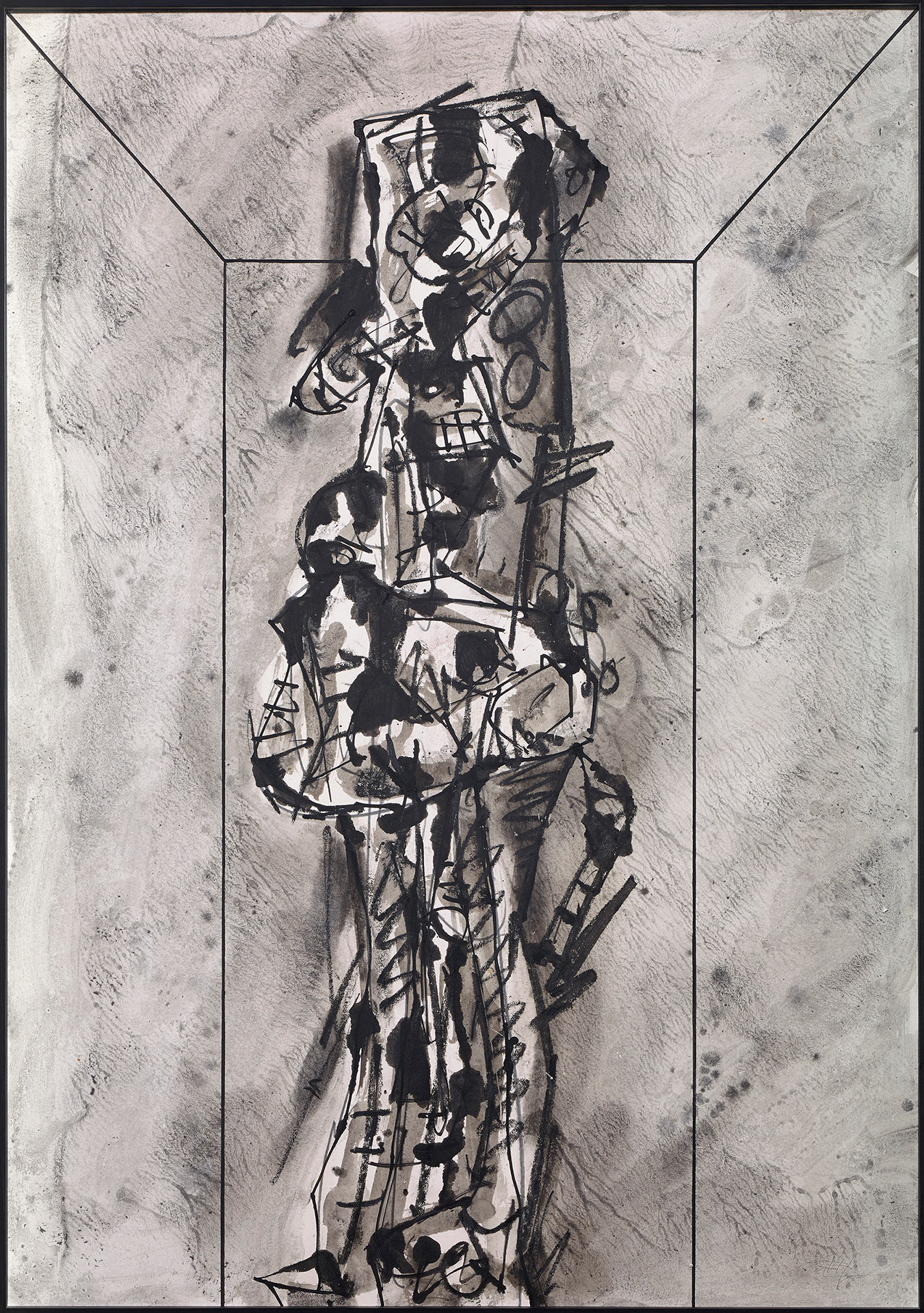
Antonio Saura (Huesca, 1930 – Madrid, 1998)
Lady in Her Room
1966
WORK INFORMATION
Indian ink and gouache on paper, 90 × 63 cm
OTHER INFORMATION
Signed and dated in the lower right-hand corner: "Saura / 66"
Like many painters of his generation, Antonio Saura started out as a self-taught artist. And like many other painters who joined the adventure of Art Informel in the 1950s, his first inclination was to embrace Surrealism, a movement that had already run its course but in the 1940s still had a certain relevance and was the benchmark for young artists with a desire for renewal who were getting started in painting at the time. Some of his early works, made in the late 1940s, clearly reflect the Surrealist style. But perhaps the most influential moment of his formative years was the time he spent in Paris between 1953 and 1955, where he held several exhibitions. In 1957 Saura joined other artists, including Canogar, Feito, Millares, Rivera, Francés, Suárez and Serrano, to form the El Paso group, which was instrumental in launching and defining a new Spanish avant-garde in sync with international trends.
The art of the El Paso painters was not characterised by adherence to a set of established rules and principles but by the development of individual expressivity. This trait, together with their collective loyalty to the existential, angst-ridden facet of Abstract Expressionism, is what lends a sense of unity to the creative manifestations of the group's members. However, while Saura's art participated in this glorification of expressivity, it never abandoned figurative references. Though his works reach new heights of expressivity in images spawned by a contaminated version of action painting, Saura always maintained a link to reality and especially to the human figure, anguished in an oppressive space and marked by the accent of a palette reduced to blacks, greys and whites in his oil paintings, drawings and prints. We see this in his imaginary portraits and crucifixions, where figuration serves as the excuse and support for the painting's gestural expressivity.
Dama en su habitación [Lady in Her Room] clearly illustrates this synthesis of abstraction and figuration that defined Saura's painting. The reference point of a space, the presence of a compressed figure within that space, the colour reduced to the three aforementioned tones, and the expressive brushwork, subordinated to the description of a figurative theme, translate into an ode to distortion and the expressive, angst-ridden value of deformation. The spatial reference is provided by a linear design superimposed on a ground to suggest a tiny room in which a figure suffers the existential anguish of living. [Víctor Nieto Alcaide]

